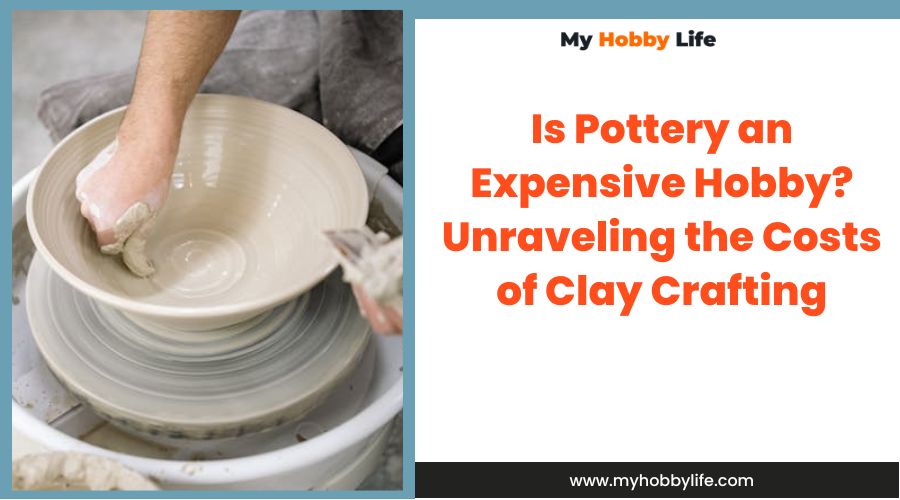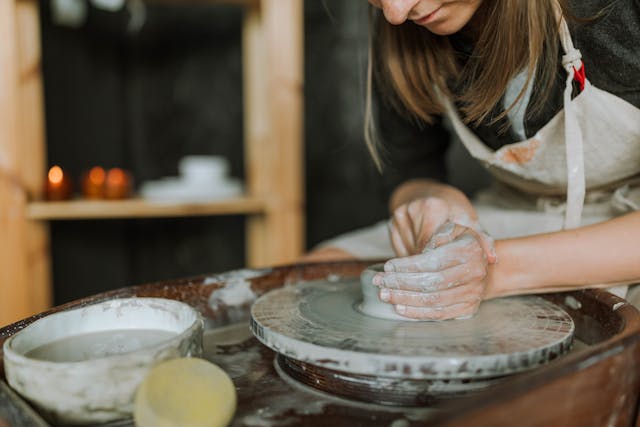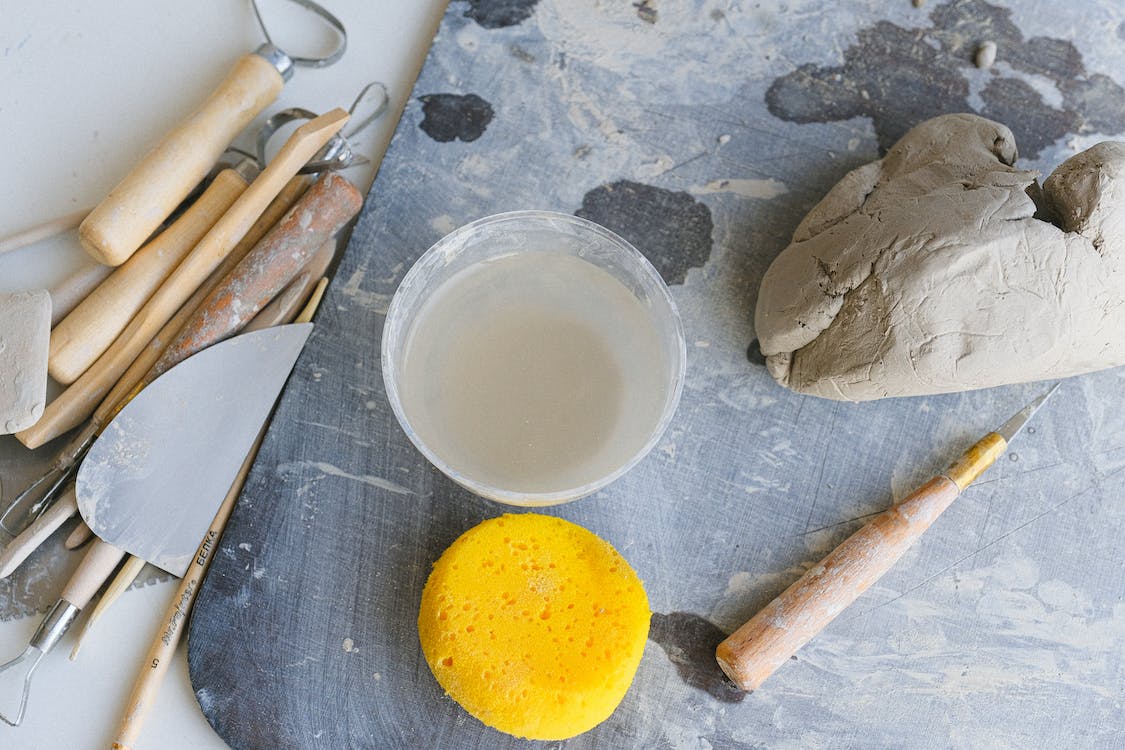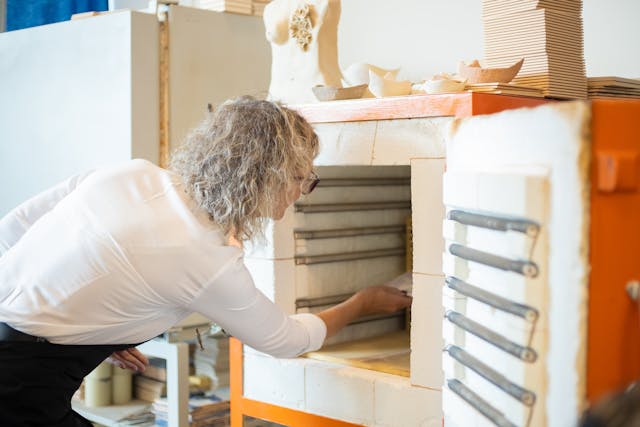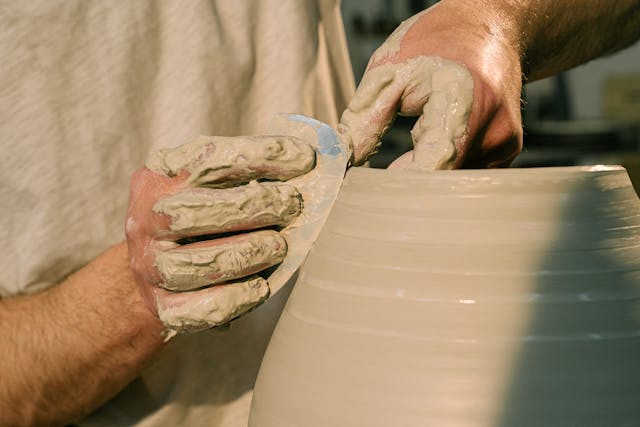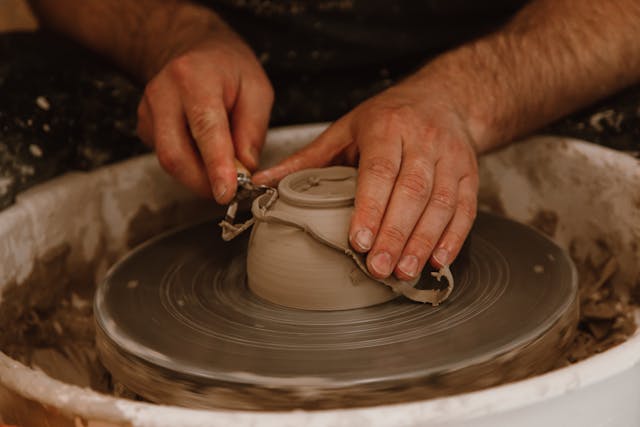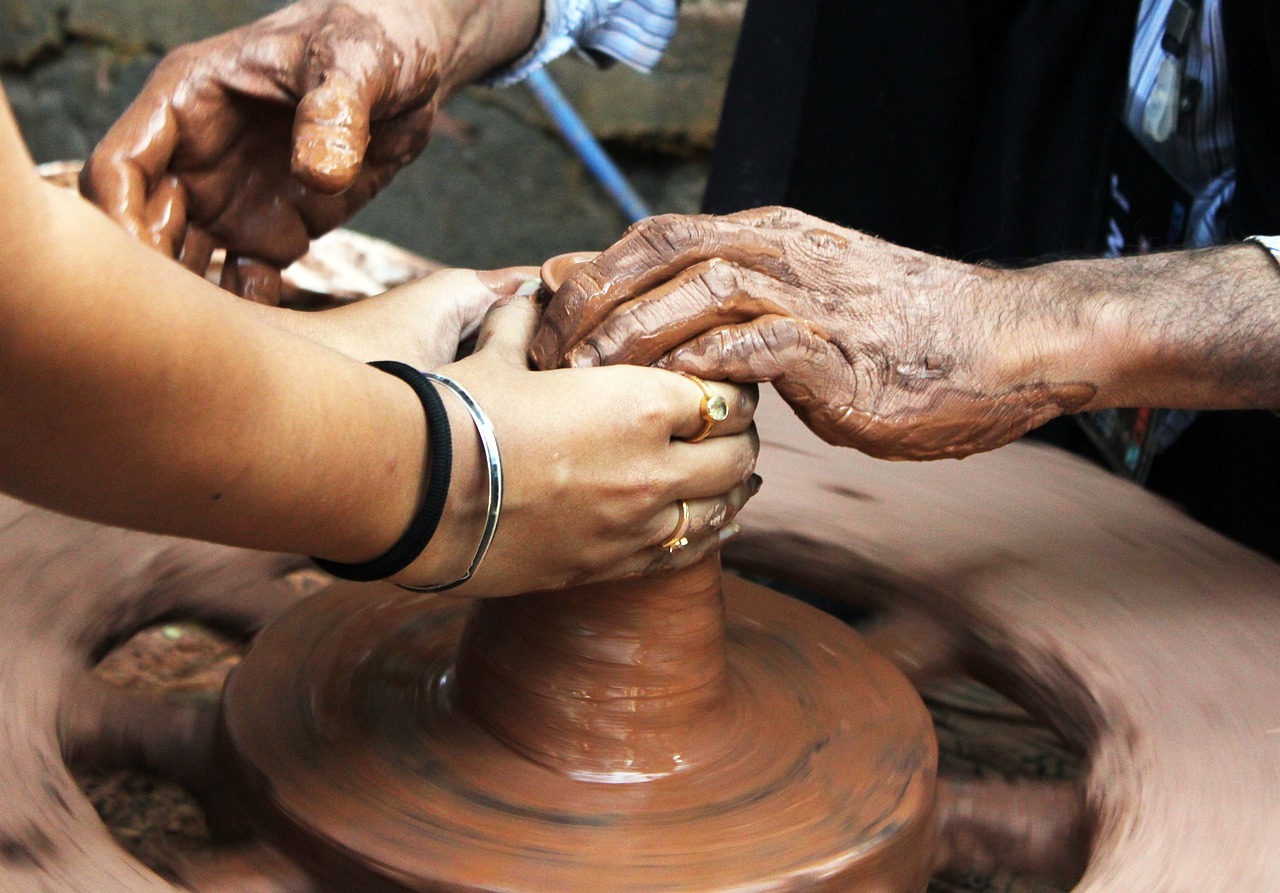Pottery as a hobby captures the imagination, allowing individuals to create with their hands and bring forth objects shaped from clay. It has roots deep in history, touching cultures across the globe and enduring over time due to its functional and aesthetic appeal. As interest resurges in this tactile art form, the costs involved are often a point of consideration for beginners. Pottery requires an initial setup that includes tools, materials, and possibly a wheel and kiln, which can be significant, but these expenses can be mitigated through various choices and practices.
An upfront investment is typical when one decides to take up pottery, with costs varying based on the quality of equipment and supplies. Starting necessities often comprise a reliable pottery wheel, a selection of tools for shaping and decorating, clay, and a kiln for firing finished pieces. This can accumulate to a substantial amount, with beginners potentially spending around $1,400 to fully equip themselves. However, after this initial investment, the recurring costs are usually more manageable, as replenishing materials is less costly than the purchase of durable goods such as a wheel and kiln.
Moreover, the perception of pottery as an expensive hobby is subject to one’s approach towards it. There are economical alternatives and strategies to scale down expenses without compromising the creative journey. For instance, joining a pottery studio that provides communal equipment or purchasing a budget-friendly wheel can significantly reduce the financial barrier, making pottery a more accessible and less daunting endeavor for those who are passionate about shaping clay into art.
Understanding Pottery as a Hobby
Pottery is an expressive form of art that melds creativity with tactile skill, inviting one to explore various types of clay and ceramics. It’s both a timeless craft and a valuable artistic endeavor.
History and Artistic Value
Pottery has been an integral part of human civilization, dating back to prehistoric times. As art and utility, it serves as a cultural chronicle, telling stories of past societies through their sculpted clay. The artistic value of pottery is evident in the craftsmanship of items ranging from decorative porcelain to functional earthenware. One may trace the evolution of aesthetic sensibilities and technical advances through the study of pottery, thus highlighting its significance beyond mere creativity—it is a reservoir of human knowledge.
Types of Pottery and Clay
There’s a diverse spectrum of pottery, each with distinct properties and uses. Here’s a brief overview:
- Earthenware: Known for its porous nature after firing, it’s often glazed for practical use.
- Stoneware: A heftier, more durable material, stoneware is waterproof even without glaze.
- Porcelain: Valued for its delicate appearance and strength, porcelain requires high firing temperatures.
Pottery enthusiasts often start by learning the different types of clay, each offering a unique experience:
- Kaolin: Pure and fine, kaolin is primarily used in making porcelain.
- Ball clay: Highly plastic, it’s a common addition to other clays to improve workability.
- Fireclay: Known for its ability to withstand high temperatures.
- Stoneware clay: A versatile clay, it’s typically used for creating stoneware pottery.
Each type of clay invites a distinct aspect of creativity and challenges one’s pottery skills in molding, glazing, and firing—essential components in the creation of both art and functional ceramics.
Getting Started with Pottery
Embarking on a pottery hobby involves both education and gathering the right tools. Beginners should focus on finding quality education through classes and selecting equipment that matches their skill level and budget.
Finding Pottery Classes
Those interested in pottery can find classes at local studios, community centers, or art schools. Pottery classes provide hands-on experience and guidance from skilled instructors. Beginners benefit from learning foundational techniques in a structured environment. Before enrolling, one should consider factors like the class size, the reputation of the studio or instructor, and the types of projects offered in the curriculum. It is important to choose a class that matches one’s skill level—from basic to advanced.
- Local studios: Small group sizes, personalized attention.
- Community centers: Often more affordable, diverse age groups.
- Art schools: Comprehensive education, access to a wide range of equipment.
Choosing the Right Equipment
Selecting the appropriate pottery tools and equipment is essential for any aspiring potter. The most fundamental tools include a pottery wheel, tools for shaping and trimming clay, and a kiln for firing finished pieces. While pottery wheels can range in price from $200 to $2500, beginners might start with a less expensive model.
- Pottery wheels: Essential for shaping clay, varied prices.
- Kilns: Necessary for firing pottery, consider size and energy efficiency.
- Tools: Basic sets include shaping, cutting, and finishing tools.
When it comes to clay, options include earthenware, stoneware, and porcelain. Each type offers different characteristics and firing temperatures:
| Type of Clay | Firing Temperature | Characteristics |
|---|---|---|
| Earthenware Clay | Low | Porous, rich in color |
| Stoneware Clay | Mid to High | Durable, less porous |
| Porcelain Clay | High | Fine texture, translucent |
A beginner should not overlook the importance of acquiring quality pottery equipment. Although upfront costs may be substantial, investing in durable equipment pays off in the long run.
- Earthenware: Cost-effective for beginners, easy to work with.
- Stoneware: Versatile, suitable for both functional and decorative pieces.
- Porcelain: Requires advanced skill, offers a delicate and refined finish.
Choosing the right type of clay and learning to fire it in a kiln are pivotal steps for someone new to the pottery hobby. Aspiring potters should consider their intended projects and personal preferences when selecting materials and tools. Access to a fully equipped pottery studio can also significantly enhance the learning experience.
Cost Considerations
When it comes to pottery, one’s budget needs to align with both the initial investment in materials and equipment, and the ongoing expenses for maintenance and restocking.
Initial Investment
The initial cost of embracing pottery involves several key materials and tools. A beginner potter will need to invest in:
- Clay: Depending on the type, a 25-pound bag of earthenware clay can range from $10 to $20, while stoneware clay might cost between $15 to $25.
- Tools: Basic tool kits, including ribs, needles, and cutters, may cost around $15 to $30.
- Equipment: A fundamental piece of equipment such as a pottery wheel can range widely in price from $200 to over $1000 for a new model.
- Kiln: A crucial investment, a new kiln can cost from $300 for small models to several thousand dollars for larger, high-end versions.
Ongoing Expenses
After the initial purchase of equipment and materials, potters incur several ongoing costs:
- Materials Restocking: Clay, glazes, and tools need to be regularly restocked. The frequency and cost will depend on the potter’s level of production.
- Utilities: Running a kiln and pottery wheel can lead to a noticeable increase in the electric bill, which varies based on usage and local utility costs.
- Maintenance: Wear and tear on tools and equipment will require periodic maintenance or replacement.
- Studio Fees: For those who do not own their equipment, studio fees can range from $20 to $40 per class or $150 to $200+ for an 8-week course.
These costs should be considered when determining if pottery aligns with an individual’s budget and if it can be pursued as an affordable hobby.
Pottery Techniques and Skill Development
Pottery stands as a creative outlet offering a spectrum of techniques ranging from elementary hand-building to intricate wheel-throwing. Mastery in pottery not only demands understanding of these techniques but also continuous skill development through practice and refinement.
Basic Techniques
One embarks on their pottery journey with foundational methods, where hand-building constitutes the core. This method includes techniques such as pinching, coiling, and slab construction. New potters learn to manipulate clay with their hands, employing various hand tools to enhance the form and add details.
- Pinching: A technique starting with a ball of clay, which is gently pressed and pinched to create pots or bowls.
- Coiling: Involves rolling out long strands of clay and stacking them to build up walls of a vessel.
- Slab Construction: Flat pieces of clay are cut and joined to create geometric forms.
The use of a trimming tool is fundamental, even at the beginning stages, to refine the shape and ensure an even wall thickness in the created pieces. This stage is about exploration and embracing trial and error as essential contributors to skill advancement.
Advanced Pottery Making
Progressing to more advanced levels, potters encounter wheel-throwing, a technique that requires a certain finesse and coordination. Precision is key, and control over the pottery wheel becomes a pivotal skill set. At this stage, sculpting and carving tools are often introduced to embellish and define works.
- Wheel-throwing: Demands steady hands and concentration to center and shape the clay on a rotating wheel.
- Glaze Application: A complex skill where one learns to apply glazes that can drastically transform the look and feel of the pottery during firing.
- Carving: Detailed patterns and textures are created using various tools, adding depth and intricacy to the pottery.
Throughout this progression, potters refine their techniques and develop a keen eye for form and surface, elevating their craft to levels where unique styles and expressions emerge. Skill development is a perpetual process, marked by patience and a willingness to learn from each creation.
Practical Aspects of Pottery Making
When setting up for pottery, individuals must consider both the initial studio space and equipment costs as well as the ongoing maintenance and upkeep.
Setting Up Your Studio Space
Space Requirements: A pottery studio requires sufficient space for storage, a workspace, and area for the kiln, which can reach high temperatures and needs appropriate ventilation. Typically, at least a small room or dedicated corner with robust flooring is recommended to manage messes from clay and glazes.
- Essential Equipment:
- Pottery Wheel: Many potters use a wheel for throwing clay, which can range in price from a few hundred to a few thousand dollars.
- Kilns: These are essential for firing pottery. They vary widely in size, type, and price, often costing between $300 to $3000, depending on the capacity and features.
- Shelving: Robust shelving is critical for storing work in progress as well as completed pieces.
- Work tables: A sturdy table provides a work surface for wedging clay and hand-building techniques.
Maintenance and Upkeep
- Kiln Maintenance: It is critical to regularly check kiln elements and the kiln’s interior for wear or damage. Replacing parts or performing other repairs can be part of routine upkeep.
- Cleaning: A pottery studio requires regular cleaning to avoid clay dust accumulation, which can be hazardous to health. Wet mopping rather than sweeping is advised to minimize dust.
- Wheel Care: Pottery wheels should be cleaned after each session, and mechanical parts may need occasional lubrication according to the manufacturer’s instructions.
Inventory Management: Clay, glazes, and tools will be used and replenished over time. Keeping a good record is important for maintaining supplies and budgeting for restocking.
By carefully considering the requirements and responsibilities of setting up and maintaining a pottery studio, individuals can ensure they have a functional and safe environment for their creative endeavors.
Joining the Pottery Community
Joining a pottery community can greatly enhance one’s satisfaction in the craft through networking, attending workshops, and sharing knowledge. It provides a rich opportunity not just to learn, but also to build relationships and work towards shared goals.
Networking and Workshops
Workshops are a cornerstone of the pottery community, providing hands-on experience and direct instruction from seasoned potters. They range from beginner-friendly introductions to focused sessions on specific techniques. Often, a workshop acts as a networking hub where individuals can connect with mentors and fellow enthusiasts. For example:
- Beginner Workshops: Typically, run for 6–8 weeks, costing $150–$200.
- Advanced Workshops: May focus on specific skills like glazing and vary in price accordingly.
Participation in these workshops not only improves one’s pottery skills but also embeds individuals into a community that shares common interests and goals.
Sharing and Learning
The pottery community thrives on a culture of sharing and continuous learning. Within this community, more experienced potters often take satisfaction in guiding newcomers, seeing it as an extension of their own practice and a way to give back.
- Classes: Regularly scheduled classes allow for progressive skill development, where fees can range from $20 to $40 per session.
- Community Studios: Some studios provide materials and tools, encouraging members to experiment and learn without the burden of large initial investments.
This dynamic creates a supportive environment where achievements are celebrated, and a sense of accomplishment is communal. By engaging with the community through sharing and learning, potters at all levels foster a deeper connection to their craft and to one another.
Frequently Asked Questions
Pottery can be a rewarding hobby, yet many beginners have questions about the expenses associated with it. Here are some common queries around the costs of getting into pottery and continuing it as a hobby or profession.
How much do beginner pottery classes typically cost?
Beginner pottery classes often range from $20 to $50 per session, with the variation depending on the location, duration, and the expertise of the instructor. Some studios offer multi-class packages at a reduced rate per class.
What is the average price range for a quality pottery wheel?
The price for a quality new pottery wheel can vary broadly, usually between $400 to $1,500. However, it’s possible to find used wheels at a lower cost or buy a more basic model as a beginner.
Can the costs of pottery as a hobby vary significantly?
Yes, the costs of pottery can vary based on factors such as the type of classes taken, frequency of practice, quality and cost of equipment purchased, and the type of clay and glazes used.
What is the cost of materials, such as clay, for pottery?
Clay prices fluctuate depending on the type and quality, ranging typically from $0.50 to $1.50 per pound. Additional materials, like glazes and firing costs, further contribute to the overall expense.
What factors contribute to the cost of handmade pottery?
Handmade pottery costs can include the materials (clay, glazes), equipment wear and tear, electricity for firing, studio rental, labor time, and the artist’s expertise. The uniqueness and complexity of the pieces also affect the pricing.
Is it financially viable to pursue pottery as a source of income?
Pursuing pottery as a source of income can be financially viable with a thorough business plan, diligent market research, and a strong skill set. Many potters sell their work online, at craft fairs, or through galleries, though it typically requires time to establish a profitable venture.
